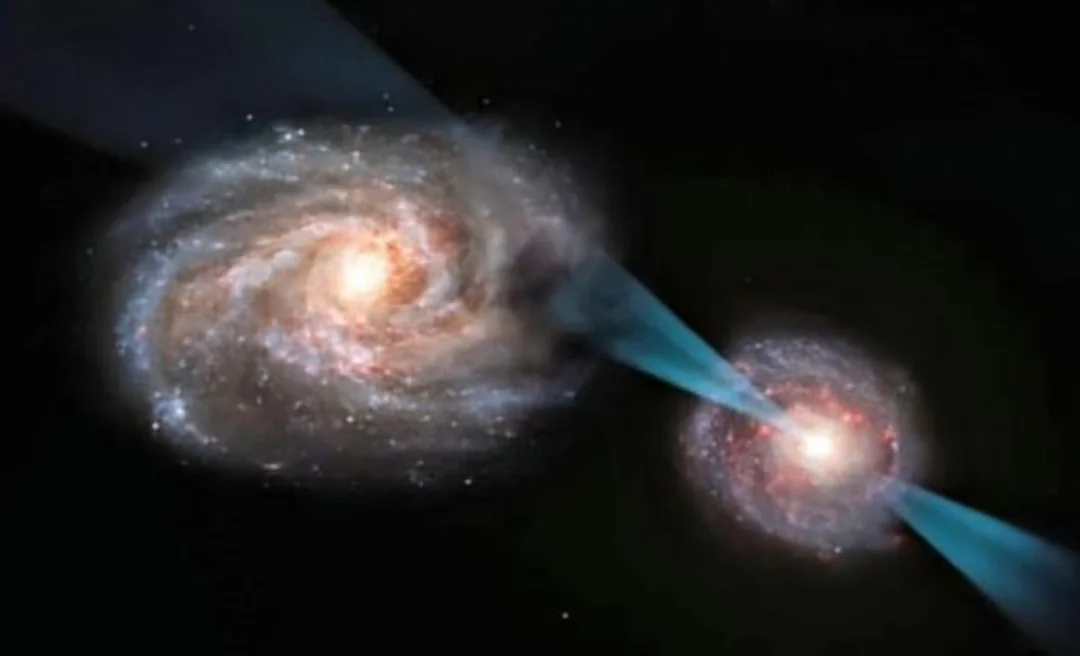
Cosmic Collision: Quasar Beam Shuts Down Star Birth in Distant Galaxy
In a stunning revelation of cosmic proportions, a pair of galaxies locked in a high-speed collision 11 billion light-years away is challenging our understanding of galactic interactions. Astronomers have observed one of these galaxies, powered by a quasar, blasting its neighbor with intense radiation, effectively halting new star formation. This dramatic event, dubbed the 'cosmic joust,' offers a rare glimpse into the early universe and the powerful influence of quasars.
The study, led by Pasquier Noterdaeme and Sergei Balashev, unveils the dynamics of this galactic clash, where two galaxies are hurtling towards each other at an astounding 310 miles per second. The key player in this celestial drama is a supermassive black hole residing at the heart of one galaxy. As matter spirals into this black hole, it forms a quasar, emitting extreme radiation that can outshine entire galaxies. This radiation is now shown to have a devastating effect on the star-forming potential of its companion galaxy.

"Here we see for the first time the effect of a quasar's radiation directly on the internal structure of the gas in an otherwise regular galaxy," explained Balashev. Observations reveal that the radiation has compressed the gas within the affected galaxy into tiny, dense clumps, far too small to support new star birth. This 'negative feedback' mechanism, where energy from black holes actively shuts down star formation, is a crucial aspect of galaxy evolution.
Using data from the Atacama Large Millimeter/submillimeter Array (ALMA) and the Very Large Telescope (VLT), researchers were able to distinguish what initially appeared as a single fuzzy object into two galaxies engaged in a fierce collision. This allowed them to trace the path of the quasar's radiation as it carved through the gas clouds of the victim galaxy.
The team also discovered that the chaotic collision process provides fresh gas to the ravenous black hole, fueling its relentless assault. This offers insight into why quasars were more prevalent in the early universe when galaxy interactions were much more common.
This groundbreaking observation, published in the journal Nature, confirms long-standing theories about how radiation from black holes can stifle star formation in neighboring galaxies. Future instruments like the Extremely Large Telescope promise to provide even more detailed insights into the aftermath of these cosmic collisions.
What does this discovery tell us about the future of galaxies as they continue to merge and evolve? Leave your thoughts in the comments below.
Subscribe to our newsletter for engaging articles, exclusive content, and the latest updates. Check us out on EarthSnap, a free app!